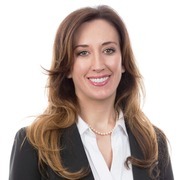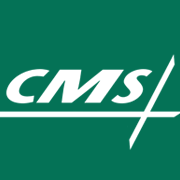Why Accountable Care Organizations Need Revenue Cycle Risk

- Is the "Accountable" part of accountable care organizations being ignored? Over 100 new Medicare Accountable Care Organizations (ACO) participants will keep quality high and costs low, according to the Centers for Medicare & Medicaid Services (CMS). Accepting financial risk and putting the "accountable" back in the ACO may be the key to revenue cycle success. Will over 100 new ACOs make return on investment waves?

To provide some clarity on recent ACO developments, RevCycleIntelligence.com chatted with April Wortham-Collins (pictured), Senior Analyst at Decision Resources Group. The following is the second part of a two-part interview.
A shrinking Pioneer ACO program proves encouraging
The CMS ACO participant news regarding new agreements was expected, Wortham-Collins says. But the greater implications of these announcements still require some digesting, she confirms.
“There are really two announcements. The Next Generation ACO participants – a new ACO model for CMS and the new editions to the existing ACO model, the Medicare Shared Savings Program, the Medicare End Stage Renal Disease Program (ESRD) which was actually announced back in October, but really didn't get a lot of attention, because it is billed to a very specific population.”
There are now 434 ACOs as the Pioneer ACO program continues to shrink to nine participants. This is encouraging, she explains. Revenue cycle targets are within sight and may even be hit.
“CMS and the federal government continue to believe in this model as a way to shift away from fee-for-service reimbursements. The goal by the end of this year is at least 30% of CMS Medicare payments be tied to value-based models, including ACOs. It then goes up to 50%.
“With this new batch of ACOs announced, that should put then within reach of that 30% goal. You think about the fact that FEMA just launched these ACO initiatives in 2012, and how aggressive of a target 30% of that is. Monetarily, that's a huge number.”
The announcement signals high levels of dedication and investment on behalf of CMS, she says.
“The fact that [CMS] introduced this now fourth option for providers to get involved in ACOs shows that there is no one-size-fits-all model for accountable care. It's not to say that the Pioneer Model was, or is, broken. It was a good first step.”
“It got some of the big heavy hitters out front that have been engaged in accountable care strategies and population health management before the term ACO was assigned to that. It put some momentum behind the ACO movement."
ACOs are far from a one-size-fits all concept
Wortham-Collins says the nine ACOs that remain in the program may merely be doing what works best for them. But what works best for some may not work best for all, she adds.
“We started off with 32. So what happened to those other participants? Well, most of them moved to the Medicare Shared Savings Program model, one that doesn't involve downside risk for quality or patient outcome.”
Wortham-Collins says when recently perusing through the initial cohort of 21 participants for the Next Generation ACO Model, she counted at least five that started off as Pioneers.
“These are clearly people who have not given up on accountable care. The Pioneer didn't suit them, so they're giving it another go with the Next Generation ACO model. And not just giving it another go, because most of these initial pioneers had switched to the Shared Savings model, which is sort of the safest ACO route CMS offers.”
“The 'A' in ACO stands for 'Accountable.' You cannot be fully accountable for patient population until you're willing to accept financial risk when things do not go as planned. We won't see the full potential of ACOs until we have more folks accepting that financial risk."
Immunity to risk is not a guarantee
“As of today, we have more than 1,100 ACO contracts – at the contract level, mind you. There are many ACOs with multiple ACO contracts. These span Medicare, Medicaid, commercial, and the hybrid model.”

“What we have noticed in the last six months to a year is trajectory has begun to level off somewhat.”
People hopped onboard early, she says. But even those on the shared savings track of the Medicare Shared Savings model are not necessarily immune to risk, she explains.
“A lot of investment goes into planning and launching and day-to-day management and maintenance of an ACO. If you are not reaching that threshold for shared savings payments, you're in effect losing money.”
“Expectations were high. Once the results came out – especially the second year performance results that came out last summer – this caused some folks to maybe pull back a little who were had been thinking about jumping into ACOs.”
Wortham-Collins says those who pulled away still were aware CMS was preparing to make some future ACO tweaks.
News of the Medicare Shared Savings Program’s introduction of a track three model, beginning on January 1, 2016, apparently fell to the wayside of Next Generation ACO news, she states.
“The track three model is very similar in concept to the Next Generation ACO. It tries to gently nudge these organizations into risk by giving them higher reward, if they choose to go that route.”
“These organizations knew this Next Generation model was going to be introduced. Towards the latter half of 2015, there was a sort of ‘wait and see’ mentality happening. Now we've got more than 100 new ACOs that have decided to see if they can make it happen.”
